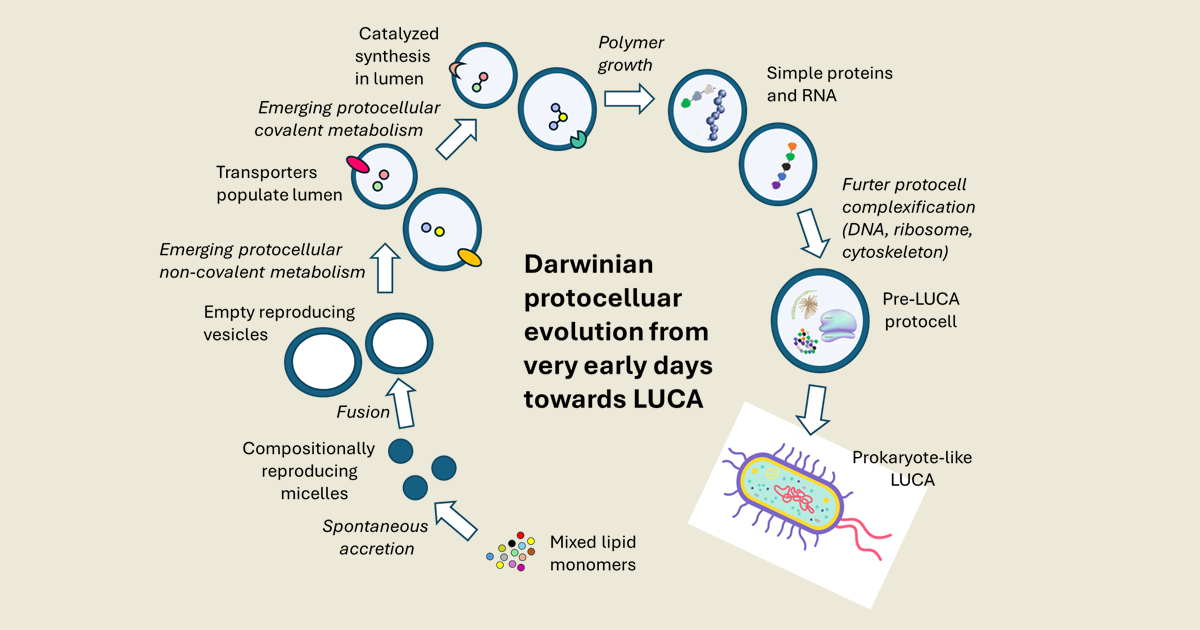The 15th Anniversary of Life—Alternatives to RNA World
A special issue of Life (ISSN 2075-1729). This special issue belongs to the section "Origin of Life".
Deadline for manuscript submissions: 29 May 2026 | Viewed by 445

Special Issue Editors
Interests: systems biology; systems prebiology; mutually catalytic networks; genome; origin of life
Special Issues, Collections and Topics in MDPI journals
Special Issue Information
Dear Colleagues,
In 1924, Alexander Oparin pioneered the scientific investigation of the origin of life. In the first half-century hence, RNA was mostly unknown and thus not considered important. Only >50 years later, upon the discovery of ribozymes, Walter Gilbert conceived the “RNA World” idea, which became extremely popular in research on the origin of life. This present Special Issue will attempt to challenge this hypothesis. A key justification for RNA World is that this polymer can self-copy its encoded chemical information, and in parallel can catalyze reactions. A prime question raised is whether RNA is unique in possessing these two properties together.
A catalyst is a compound capable of enhancing the rate of a chemical reaction. It turns out that even single amino acids can accomplish this, meaning that RNA is definitely not unique. As for information-copying, RNA indeed can under, certain conditions, copy sequences information, but is this the only way to copy information?
The fact is that contemporary life research embraces mostly a second type of information-copying, namely composition. This is exemplified by the cellular metabolome, namely the counts of every compound in a cell. It is obvious that reproducing cells requires a complex metabolic network that allows the relative amounts of all compounds (metabolites, proteins, mRNAs and lipids) to remain unchanged in a homeostatic growth process. Subsequent fission will typically lead to two very similar copies. Although mRNAs take part in this miraculous process, mRNA molecules in all cells do not self-replicate!
It is obvious that at one point in time life must have included the emergence of protocells with metabolism. Some network dynamics similar to those observed today in all living cells should, under certain circumstances, lead to protocellular self-reproduction. There is no reason to believe that this cannot happen in some primitive protocells without mRNA.
The primitive protocells must have absorbed organic molecules from the primordial soup, guardedly constructing metabolism (“Metabolism First”). mRNA or ribozymes would not be necessary at this point, and likely appeared at much later stages, at which ribosome and long proteins would co-evolve.
The real puzzle, partially addressed, is how primordial entities that harbor catalytic networks sometimes self-reproduce. Our own model suggests that micelles and vesicles (kind of protocell precursors) benefit from the huge environmental organic repertoire, resulting in a huge variety of supramolecular entities, affording the possibility of selection. Such self-reproducing protocells may beget multiple progeny with mutations, thus leading to species that can undergo Darwinian evolution. NASA’s definition encompasses even very simple molecular ensemble with the right properties as life. RNA will consequently be formed after a long path of Darwinian evolution (see figure).
The present Special Issue aims to publish articles that portray molecular models, experimental results, or reviews, devoted to understanding how life spontaneously came into being in the soup without the necessity of RNA or other long biopolymers.
Prof. Dr. Doron Lancet
Dr. Amit Kahana
Guest Editors
Manuscript Submission Information
Manuscripts should be submitted online at www.mdpi.com by registering and logging in to this website. Once you are registered, click here to go to the submission form. Manuscripts can be submitted until the deadline. All submissions that pass pre-check are peer-reviewed. Accepted papers will be published continuously in the journal (as soon as accepted) and will be listed together on the special issue website. Research articles, review articles as well as short communications are invited. For planned papers, a title and short abstract (about 250 words) can be sent to the Editorial Office for assessment.
Submitted manuscripts should not have been published previously, nor be under consideration for publication elsewhere (except conference proceedings papers). All manuscripts are thoroughly refereed through a single-blind peer-review process. A guide for authors and other relevant information for submission of manuscripts is available on the Instructions for Authors page. Life is an international peer-reviewed open access monthly journal published by MDPI.
Please visit the Instructions for Authors page before submitting a manuscript. The Article Processing Charge (APC) for publication in this open access journal is 2600 CHF (Swiss Francs). Submitted papers should be well formatted and use good English. Authors may use MDPI's English editing service prior to publication or during author revisions.
Keywords
- supramolecular
- lipid
- assembly
- protocell
- compositional
- information
- spontaneous
- catalytic
- network
- reproduction
- species
- Darwinian
- evolution
- origin
- life
Benefits of Publishing in a Special Issue
- Ease of navigation: Grouping papers by topic helps scholars navigate broad scope journals more efficiently.
- Greater discoverability: Special Issues support the reach and impact of scientific research. Articles in Special Issues are more discoverable and cited more frequently.
- Expansion of research network: Special Issues facilitate connections among authors, fostering scientific collaborations.
- External promotion: Articles in Special Issues are often promoted through the journal's social media, increasing their visibility.
- Reprint: MDPI Books provides the opportunity to republish successful Special Issues in book format, both online and in print.
Further information on MDPI's Special Issue policies can be found here.







